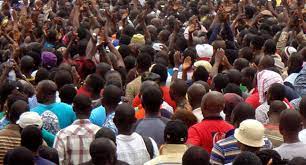A report released today by the National Bureau of Statistics (NBS) says 63 per cent of persons living in Nigeria (133 million people) are multidimensionally poor.
According to the report, 65 per cent of the poor (86 million people) live in the North, while 35 per cent (nearly 47 million) live in the South. Poverty levels across States vary significantly, with multidimensional poverty ranging from a low of 27 per cent in Ondo to a high of 91 per cent in Sokoto.
The 2022 Multidimensional Poverty Index (MPI) Survey which was launched today in Abuja by President Muhammadu Buhari was a collaborative effort between the National Bureau of Statistics (NBS), the National Social Safety-Nets Coordinating Office (NASSCO), the United Nations Development Programme (UNDP), the United Nations Children’s Fund (UNICEF), and the Oxford Poverty and Human Development Initiative (OPHI).
The survey which sampled over 56,000 households across the 36 states of the Federation and the FCT, was conducted between November 2021 and February 2022 and provides multidimensional poverty estimates at the senatorial district level.
The survey found that over half of the population of Nigeria is multidimensionally poor and cooks with dung, wood or charcoal, rather than clean energy. “High deprivations also appeared nationally in sanitation, healthcare, food insecurity, and housing.
“In general, the incidence of monetary poverty is lower than the incidence of multidimensional poverty across most states. In Nigeria, 40.1 per cent of people are poor according to the 2018/19 national monetary poverty line, and 63 per cent are multi-dimensionally poor,” according to the National MPI 2022.
Multidimensional poverty is higher in rural areas, where 72 per cent of people are poor, compared to 42 per cent of people in urban areas.
Speaking at the occasion, the Statistician-General of the country, Prince Semiu Adeyemi Adeniran, explained that the NBS computes and uses both the monetary and multidimensional measures of poverty. The approach for each of them is different, so the results should not be seen as contradictory but rather complementary to each other.










